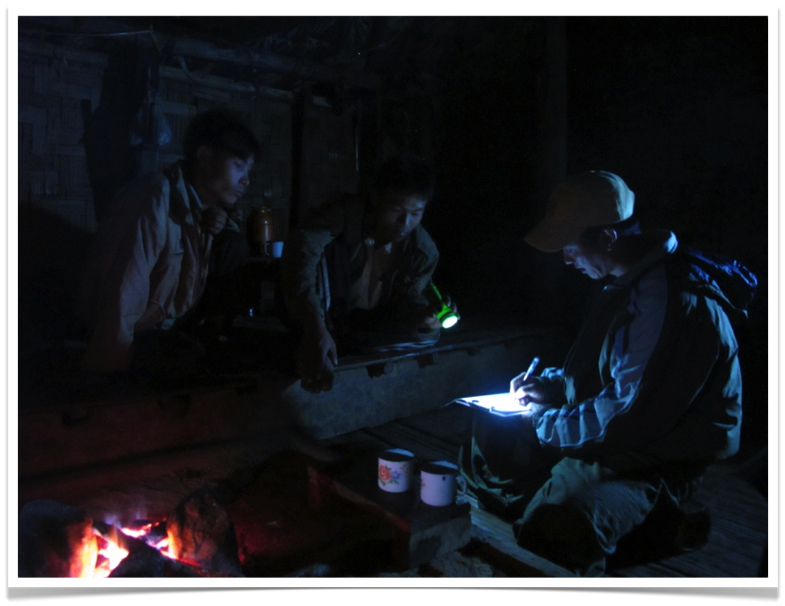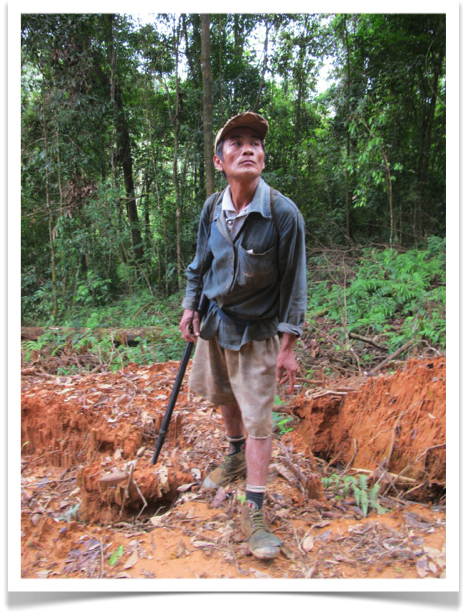Resource Needs Assessment
 Wednesday, October 1, 2014 at 9:53AM
Wednesday, October 1, 2014 at 9:53AM 
Gumring Jungkum (WCS Myanmar Program) takes notes during a Resource Needs Assessment (RNA) interview in Tikon (see Faces of Tikon and Three Jumps to Tikon). As is shown, most of the interviews were conducted by flashlight at night when people had returned home from their fields; welcome cups of hot tea were routinely provided by the households.
The RNA interviews are used to document the species and quantities of plant resources that households harvest from the forest each year, i.e. the demand. These are followed up with transect inventories to quantify the density and size-class distribution of each resource, i.e. the supply. Management planning is then undertaken together with the villagers to see what can be done to balance supply and demand and move local patterns of resource use to a more sustainable level.
[NOTE: If all goes well (visas and stuff), I should be heading back to the Upper Chindwin on October 14].
 Gumring Jungkum,
Gumring Jungkum,  Resource Needs Assessment,
Resource Needs Assessment,  Tikon in
Tikon in  Science | |
Science | |  Email Article |
Email Article |  Print Article
Print Article 











